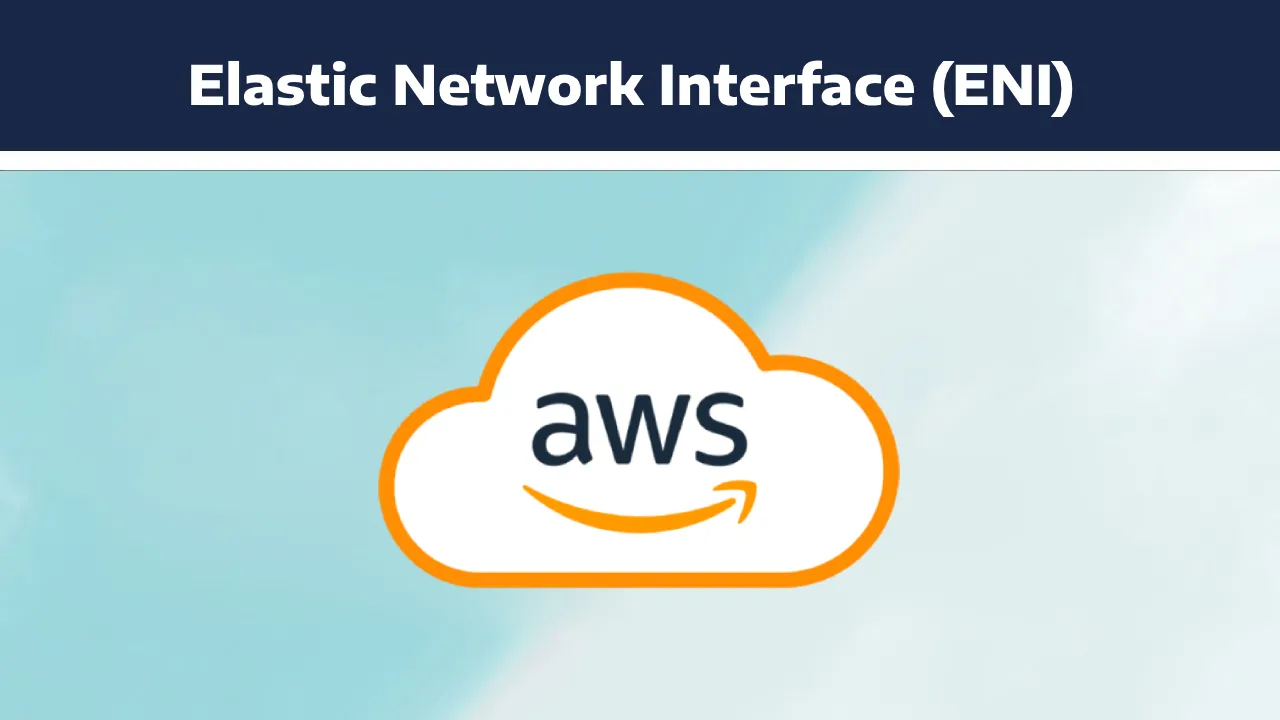Comprehensive Guide to Elastic Network Interface (ENI) in AWS
Amazon Web Services (AWS) provides Elastic Network Interface (ENI) as a fundamental component for connecting and managing networking resources within the AWS cloud. ENIs play a crucial role in enabling communication between instances, facilitating network segmentation, and providing the necessary flexibility for various use cases. In this comprehensive guide, we'll delve into the key aspects of ENIs, including their definition, features, use cases, and best practices for effective utilization.
1. Introduction to Elastic Network Interface (ENI)
1.1 Definition and Purpose
An Elastic Network Interface (ENI) is a virtual network interface that can be attached to an EC2 instance in the AWS cloud. It acts as a primary component for networking, allowing instances to connect to one or more virtual networks. ENIs provide various capabilities, including multiple private IPv4 and IPv6 addresses, security group associations, and network traffic monitoring.
1.2 Key Features of ENI
1.2.1 Multiple IP Addresses:
- ENIs support the assignment of multiple private IPv4 and IPv6 addresses to an EC2 instance, enabling the hosting of multiple services on a single instance.
1.2.2 Security Group Associations:
- ENIs can be associated with security groups, providing a way to control inbound and outbound traffic to and from instances.
1.2.3 Elastic IP Addresses:
- Elastic IP addresses can be associated with an ENI, allowing instances to retain the same public IP address even after stopping and restarting.
1.2.4 High Performance:
- ENIs are designed for high-performance networking, providing low-latency and high-throughput connectivity between instances.
2. Types of Elastic Network Interface (ENI)
2.1 Primary Network Interface
2.1.1 Default Interface:
- Every EC2 instance comes with a primary network interface by default, representing the default way instances connect to the network.
2.1.2 Attributes:
- The primary network interface is assigned a private IPv4 address, a private IPv6 address (if enabled), and a public IPv4 address (if associated with an Elastic IP).
2.2 Additional Network Interfaces
2.2.1 Definition:
- Instances can be launched with additional network interfaces, offering expanded networking capabilities beyond the primary interface.
2.2.2 Attributes:
- Additional network interfaces can have their own private IP addresses, security group associations, and Elastic IP addresses.
2.2.3 Use Cases:
- Additional network interfaces are often used in scenarios where segmentation of network traffic or additional security controls are required.
3. Creating and Managing Elastic Network Interfaces
3.1 AWS Management Console
3.1.1 Creating an ENI:
- Navigate to the EC2 dashboard in the AWS Management Console.
- Choose "Network Interfaces" and click "Create Network Interface." Follow the wizard to configure the ENI.
3.1.2 Attaching an ENI to an Instance:
- Select the newly created ENI and choose "Actions" > "Attach Network Interface." Specify the target instance.
3.2 AWS CLI
3.2.1 Creating an ENI:
aws ec2 create-network-interface --subnet-id subnet-0123456789abcdef0 --description "My network interface"
3.2.2 Attaching an ENI to an Instance:
aws ec2 attach-network-interface --network-interface-id eni-0123456789abcdef0 --instance-id i-0123456789abcdef0 --device-index 1
4. Best Practices for Elastic Network Interfaces
4.1 Use Case Alignment
4.1.1 Primary ENI for Default Traffic:
- Leverage the primary ENI for default network traffic, reserving additional ENIs for specific use cases.
4.1.2 Additional ENIs for Segmentation:
- Use additional ENIs for network segmentation, security group isolation, or when multiple network interfaces are required.
4.2 Security Group Considerations
4.2.1 Granular Security Groups:
- Associate security groups with ENIs based on the principle of least privilege, ensuring granular control over network traffic.
4.2.2 Inbound and Outbound Rules:
- Define inbound and outbound rules for each security group associated with ENIs, aligning with specific use cases and communication requirements.
4.3 Monitoring and Troubleshooting
4.3.1 CloudWatch Metrics:
- Utilize CloudWatch metrics to monitor the network performance of ENIs, identifying potential bottlenecks or issues.
4.3.2 VPC Flow Logs:
- Enable VPC Flow Logs to capture information about the IP traffic going to and from network interfaces, aiding in troubleshooting and security analysis.
5. Use Cases for Elastic Network Interface (ENI)
5.1 Multi-Tier Applications
5.1.1 Segmentation of Traffic:
- Use additional ENIs to segment traffic between different tiers of a multi-tier application, enhancing security and performance.
5.2 Network Appliances
5.2.1 Security or Network Appliances:
- Deploy network appliances, such as firewalls or load balancers, using additional ENIs to route traffic through these appliances.
5.3 High Availability Configurations
5.3.1 Dual-Homed Instances:
- Implement dual-homed instances with multiple ENIs for high availability configurations, ensuring redundancy in case of network issues.
6. Considerations and Limitations
6.1 Attachment and Detachment
6.1.1 Attachment Limitations:
- Be aware of the limitations related to attaching and detaching ENIs from instances, especially during instance lifecycle events.
6.2 Instance Type Compatibility
6.2.1 Instance Type Constraints:
- Some instance types may have constraints on the number of ENIs they can support, so consider instance type compatibility when planning your architecture.
7. Conclusion: Flexible Networking with Elastic Network Interfaces
Elastic Network Interfaces (ENIs) in AWS provide a flexible and powerful way to manage networking resources within the cloud. By understanding the types of ENIs, their features, and best practices for utilization, users can optimize their networking architecture for various use cases. Whether supporting multi-tier applications, deploying network appliances, or achieving high availability configurations, ENIs offer the necessary versatility for building robust and scalable solutions on the AWS cloud. As AWS continues to evolve its services, ENIs remain a key component for organizations seeking to achieve optimal networking performance and flexibility in their cloud infrastructure.
